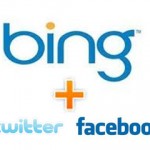 Mountain View, California — Adding some innovative Video Marketing thrust to capture more advertising dollars, search engine behemoth Google on Friday launched a new video player option for AdWords, dubbed “Media Ads,” leveraging Google’s new Lightbox video player.
Mountain View, California — Adding some innovative Video Marketing thrust to capture more advertising dollars, search engine behemoth Google on Friday launched a new video player option for AdWords, dubbed “Media Ads,” leveraging Google’s new Lightbox video player.
These Media Ads will show up as small thumbnails with a play button, placed next to a text-based, AdWords search ad found below the search box. When a user clicks on the thumbnail, the video ad will expand and take over the Google search page, playing the video ad in a larger player.

These ads allow advertisers to place emphasis on video from the search results page. The ads seem to be an intelligent expansion of Google’s available ad products, but are engaging when the focus is on media. Clearly, Google is going after big ad dollars spent by media companies when promoting new movies, TV shows, and more on the web. This is another way to grab a piece of that pie. Besides, the new format works a little differently than the traditional AdWords concept, however.
“To begin with, Media Ads is not targeted like typical AdWords ads on Google.com,” explains Google’s Dan Friedman. “With Media Ads, you do not choose any keywords — the targeting is fully automated. When someone enters a search on Google.com that our algorithms establishes is directly related to your movie title (most commonly the title and variations on it), we automatically display your Media Ad at the top of the search results page. Our research shows that when someone searches for a movie title on Google.com, they are most commonly looking for a trailer. With Media Ads, we are able to help you ensure that those users find exactly what they are looking for.”

Another new component of the Media Ad format is a new, shiny Lightbox media player for the video ads when expanded. When you click on the ad and as it expands to the center of the screen, the player will sombre the rest of the page around it. As Google says in its blog post, the entire viewing experience is meant to draw the viewer’s attention to the video in a more visually appealing experience.
So for instance, “If you enter a search query for Lincoln Lawyer, a recently released movie, on Google, you will see a search ad below the search box. When you click the ad, instead of being taken to a new site, a trailer video will pop up and play within the search screen,” explained Friedman in a blog post.
Basically, the format harnesses a video player to the available AdWords ads.

So, if this appears a lot like Video Extensions or another AdWords option that links a video player to a search ad, you are not alone. But Friedman begs to differ.
“The second thing that is unparalleled about Media Ads is the way you pay,” says Friedman. “Unlike typical AdWords ads on Google.com, you do not enter any bids for Media Ads.”
Rather, clicks on Media Ads are charged at a flat rate. This modified pricing structure makes it easier to budget for your Media Ads campaign and to know exactly how much an interaction is going to cost.”
Back in 2009, Google unfolded the AdWords New Ad Formats Initiative. The goal was to generate relevant ads and volume. Under this initiative umbrella, Google has been testing various search engine advertising ad copy formats…

Google disclosed the new format at the Search Engine Strategies Conference today. The search engine titan also revealed that 10% of all ads currently feature a new ad format that Google has rolled out over the past 15 months (Sitelinks, Product Ads, etc.). Currently this option is only offered to major movie studios promo.


